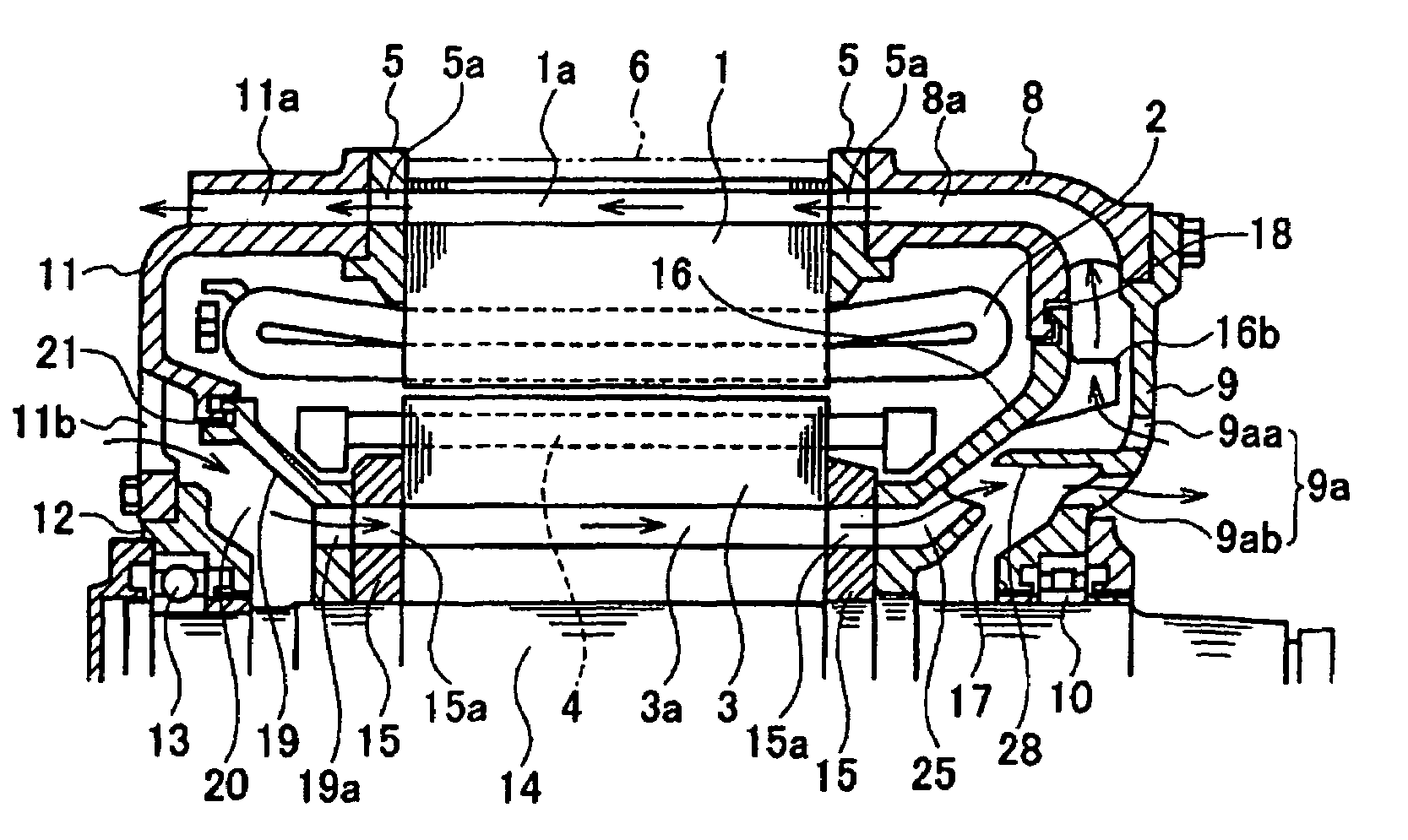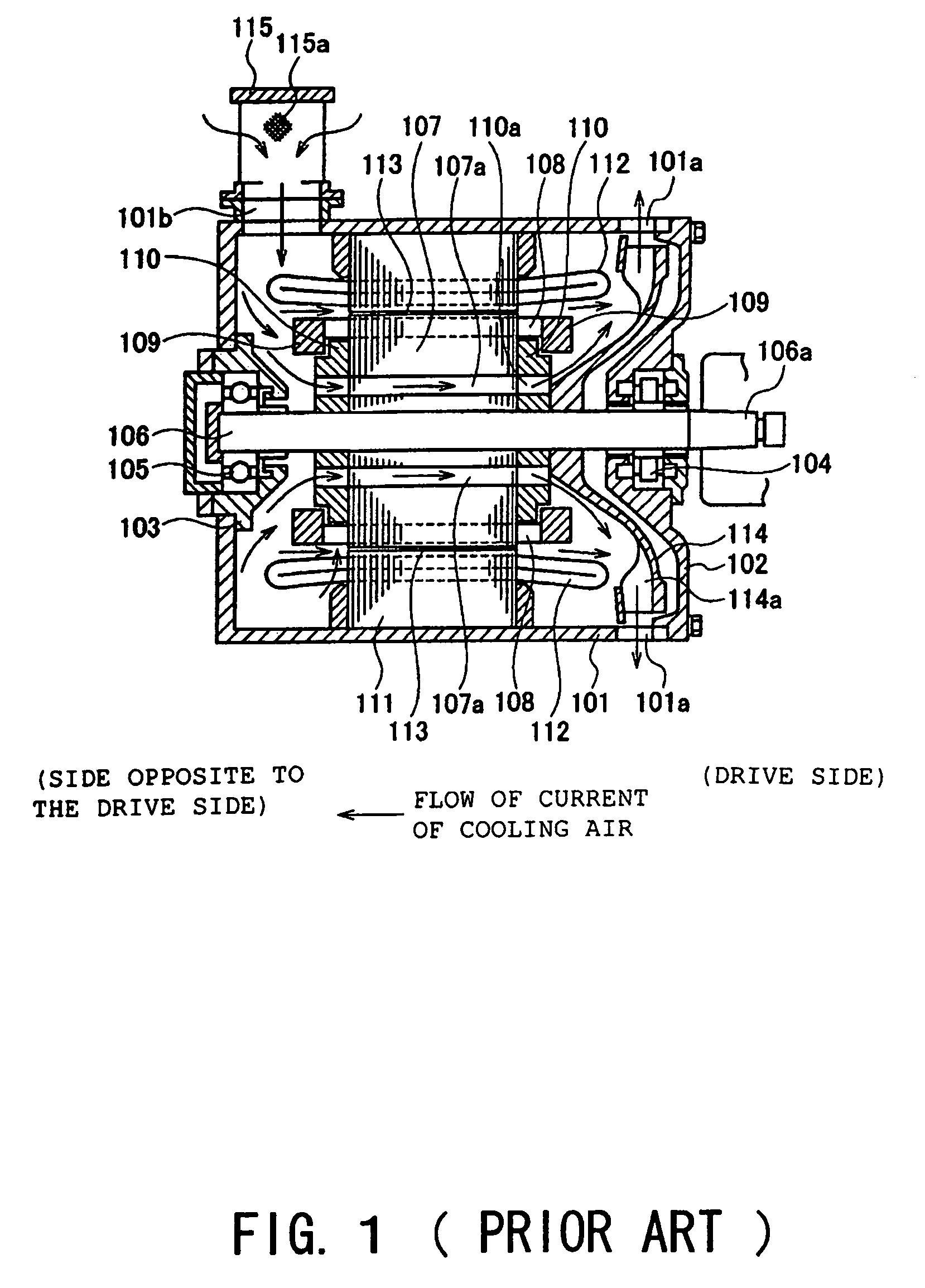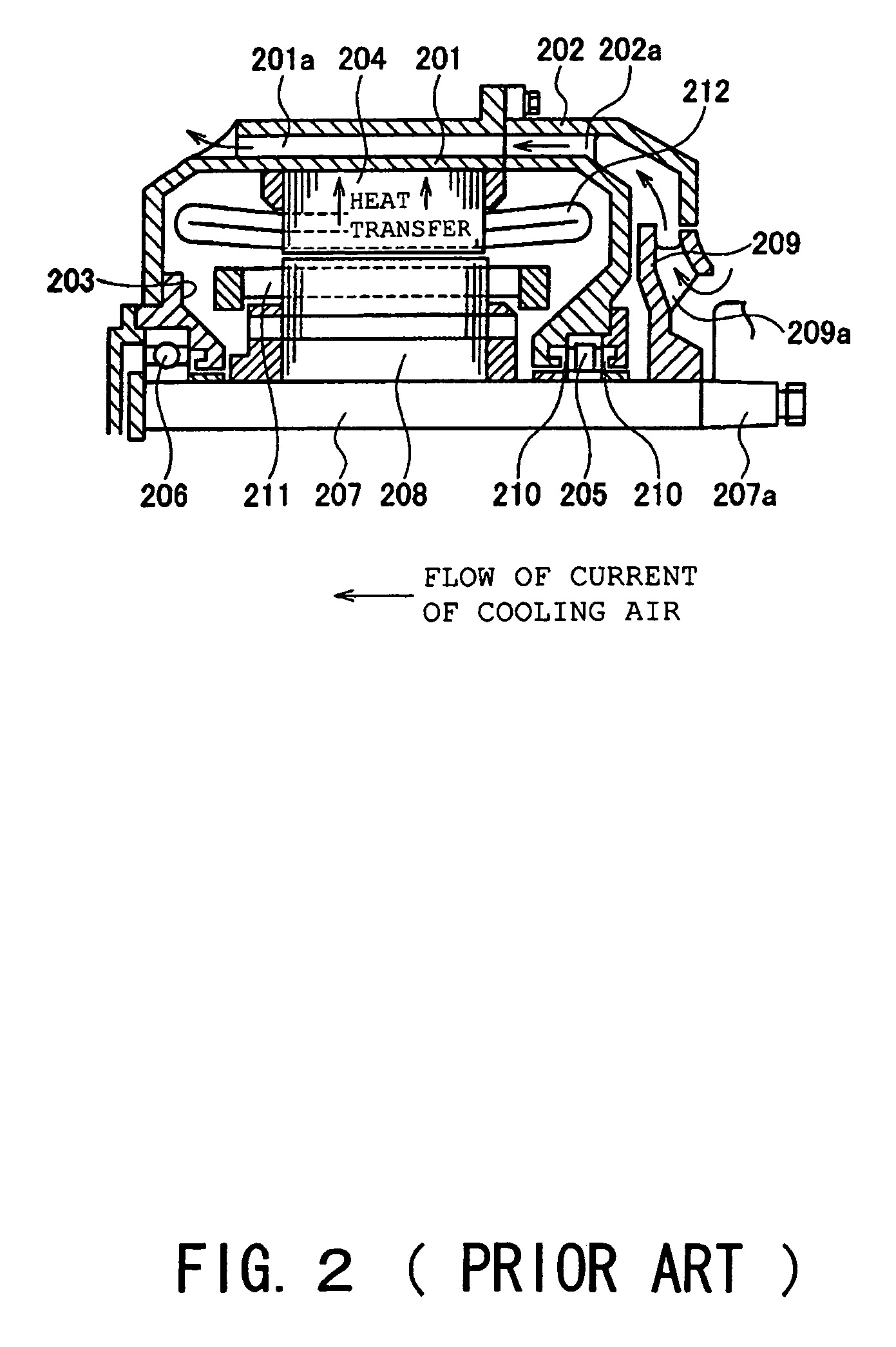Fully-enclosed fan-cooled motor
a fully enclosed, fan-cooled technology, applied in the direction of magnetic circuit rotating parts, magnetic circuit shapes/forms/construction, packaged goods types, etc., can solve the problems of reducing the amount of ventilation within the motor, requiring a large amount of labor, and a considerable obstacle to implementing an ideal fully enclosed fan-cooled motor. , to achieve the effect of suppressing the rise in the temperature of the bearing greas
- Summary
- Abstract
- Description
- Claims
- Application Information
AI Technical Summary
Benefits of technology
Problems solved by technology
Method used
Image
Examples
third embodiment
[0079]Next, a third embodiment of the present invention is described. FIG. 6 is an axial cross-sectional view of a third embodiment.
[0080]In this embodiment, in order that dust should not accumulate in the ventilation passage 3a, a ventilation fan 25 dedicated to the rotor core that sucks out air in the ventilation passage 3a is formed above the ventilation fan 16. Since the ventilation passage 38 is formed in the rotor core, which is rotating, if the centrifugal force produced by the rotation of the ventilation passage 3a becomes larger than the suction force produced by the negative pressure of the ventilation fan 16, dust may be deposited and can easily accumulate in the region outside the outer periphery of the inner surface of the ventilation passage 3a. The suction pressure must be increased in order to reduce such accumulation of dust.
[0081]Although the suction negative pressure can be increased by making the diameter of the ventilation fan 16 larger, practically all of the a...
fourth embodiment
[0082]Next, a fourth embodiment of the present invention will be described. FIG. 7 is an axial cross-sectional view of the fourth embodiment.
[0083]In this embodiment, the aperture 9a of the bearing bracket 9 is eliminated from the construction of the third embodiment, so intake of external air only takes place from the aperture 11b of the second bracket 11. In this case, compared with the third embodiment, the cooling properties regarding the rotor core 3 are inferior, but manufacture is facilitated since no aperture 9a is provided in the bearing bracket 9: the advantage is therefore obtained that manufacturing costs can be reduced.
fifth embodiment
[0084]Next, a fifth embodiment of the present invention will be described. FIG. 8 is an axial cross-sectional view of the fifth embodiment.
[0085]In this embodiment, the construction is such that the position of the ventilation fan 16 and of the bearing bracket 9 of the third embodiment are interchanged. The ventilation fan 16 is fixed to the rotor shaft 14 in a position on the outside of the motor with respect to the bearing bracket 9 and vanes 16b, 16d are formed on both the inside and outside faces at the front end thereof.
[0086]The ventilation fan 25 dedicated to the rotor core is a separate unit from the ventilation fan 16 and is fixed on the rotor shaft 14 at a position between the bearing bracket 9 and the core holder 15. The current of cooling air in the ventilation passage 3a is sucked in by the ventilation fan 25 dedicated to the rotor core and is delivered to the ventilation fan 16 through an aperture 9a provided in the bearing bracket 9. The ventilation fan 16 then delive...
PUM
| Property | Measurement | Unit |
|---|---|---|
| width | aaaaa | aaaaa |
| width | aaaaa | aaaaa |
| current | aaaaa | aaaaa |
Abstract
Description
Claims
Application Information
 Login to View More
Login to View More - R&D
- Intellectual Property
- Life Sciences
- Materials
- Tech Scout
- Unparalleled Data Quality
- Higher Quality Content
- 60% Fewer Hallucinations
Browse by: Latest US Patents, China's latest patents, Technical Efficacy Thesaurus, Application Domain, Technology Topic, Popular Technical Reports.
© 2025 PatSnap. All rights reserved.Legal|Privacy policy|Modern Slavery Act Transparency Statement|Sitemap|About US| Contact US: help@patsnap.com



